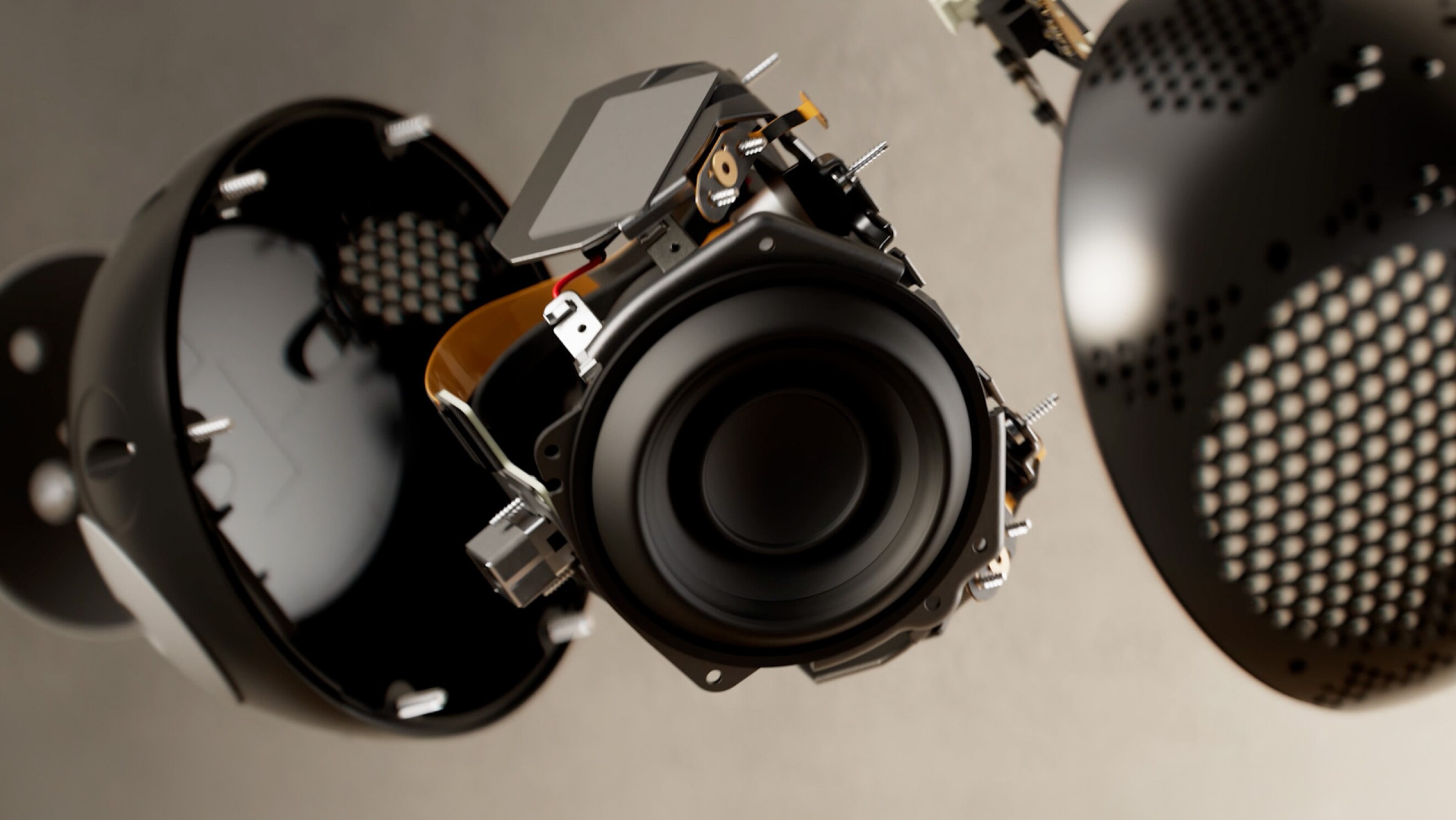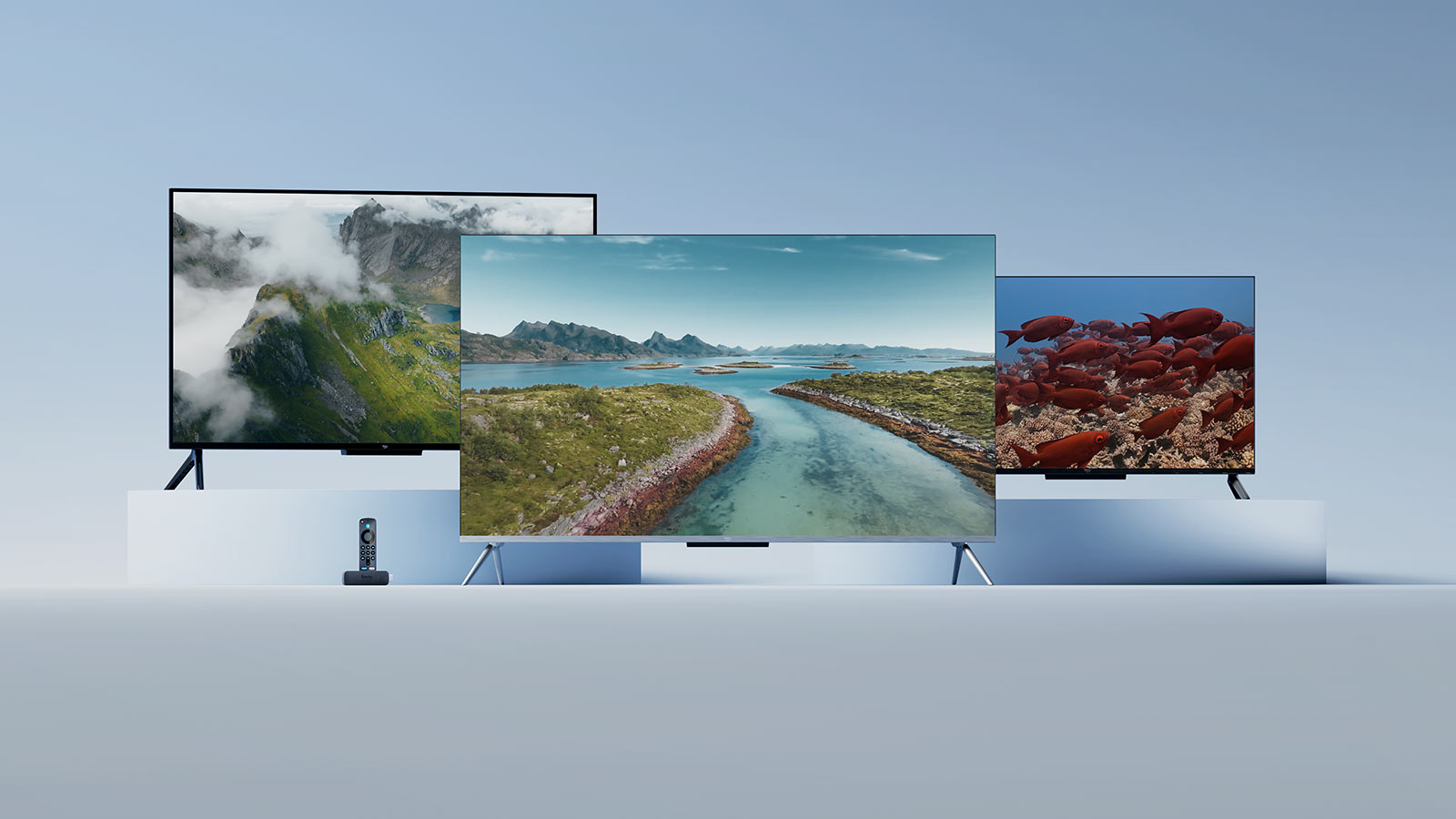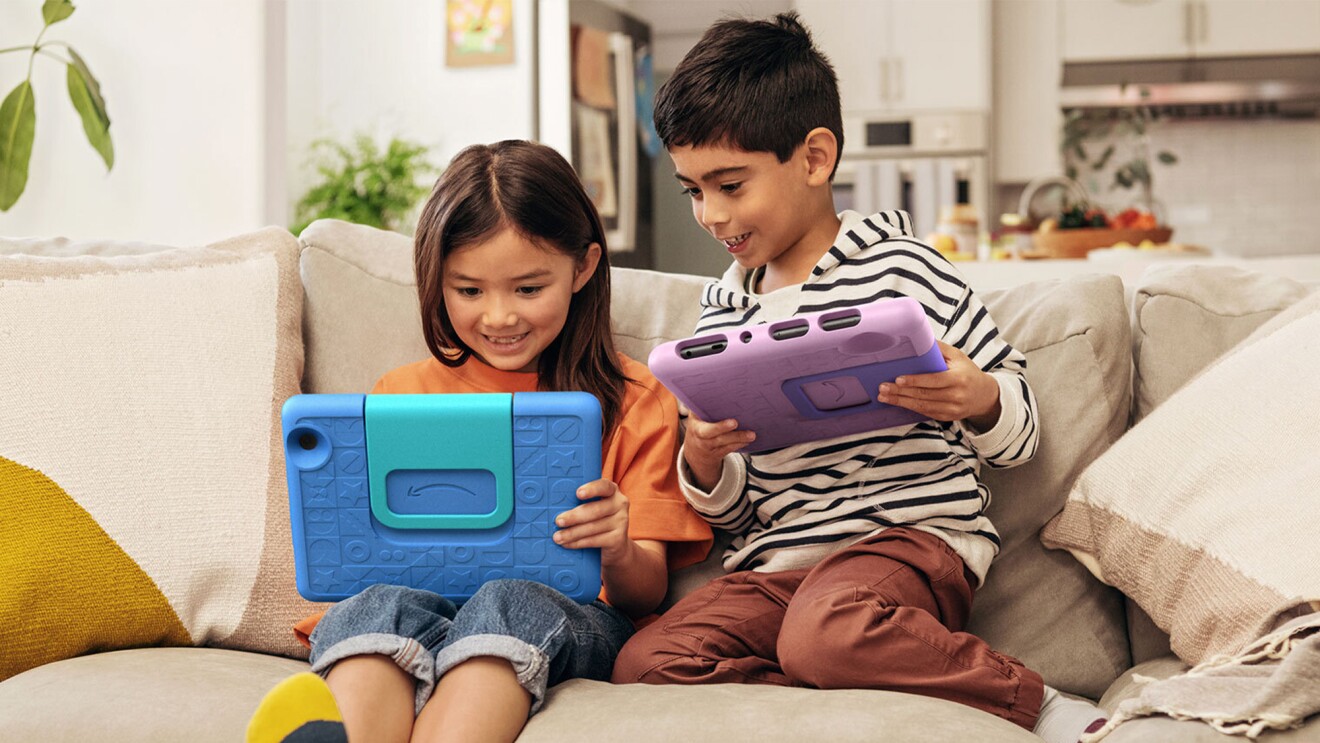Key takeaways
- Amazon's new Echo Studio is 40% smaller while Echo Dot Max delivers triple the bass of standard models.
- Both Echo speakers automatically adapt to any room's acoustics, no manual calibration required.
- Amazon engineers pushed to the point of "breaking physics" to maximize sound quality.
When Amazon's audio hardware team began work on a new lineup of Echo speakers, they knew two things for sure. First, customers were eager to see Amazon’s premium audio capabilities expand to more devices in the Echo lineup. Second, customers would appreciate devices that fit in more places across their shelves, furniture, and countertops.
Combined, those factors have driven the team's work to deliver two groundbreaking new devices: an all-new Echo Studio that packs powerful, immersive, and spatial sound into a 40% smaller package and the first-ever Echo Dot Max, which elevates Amazon's entry-level speaker line with premium audio capabilities and that delivers nearly three times as much bass as the Echo Dot.
"This was very much a ground-up effort to develop something that would delight our customers," says Richard Little, senior manager for audio hardware technology. "We designed these devices to really push the limits of what is physically possible."
The result is Amazon's most advanced Echo speakers yet. The all-new Echo Dot Max and Echo Studio feature next-gen AI processing and an Omnisense sensor fusion platform that powers more proactive and personalized Alexa+ experiences.
And they deliver deep bass and premium sound quality in packages that are smaller and more stylish than ever—while also enabling a completely revamped Alexa Home Theater experience that makes high-quality surround sound accessible to any customer.
The big squeeze
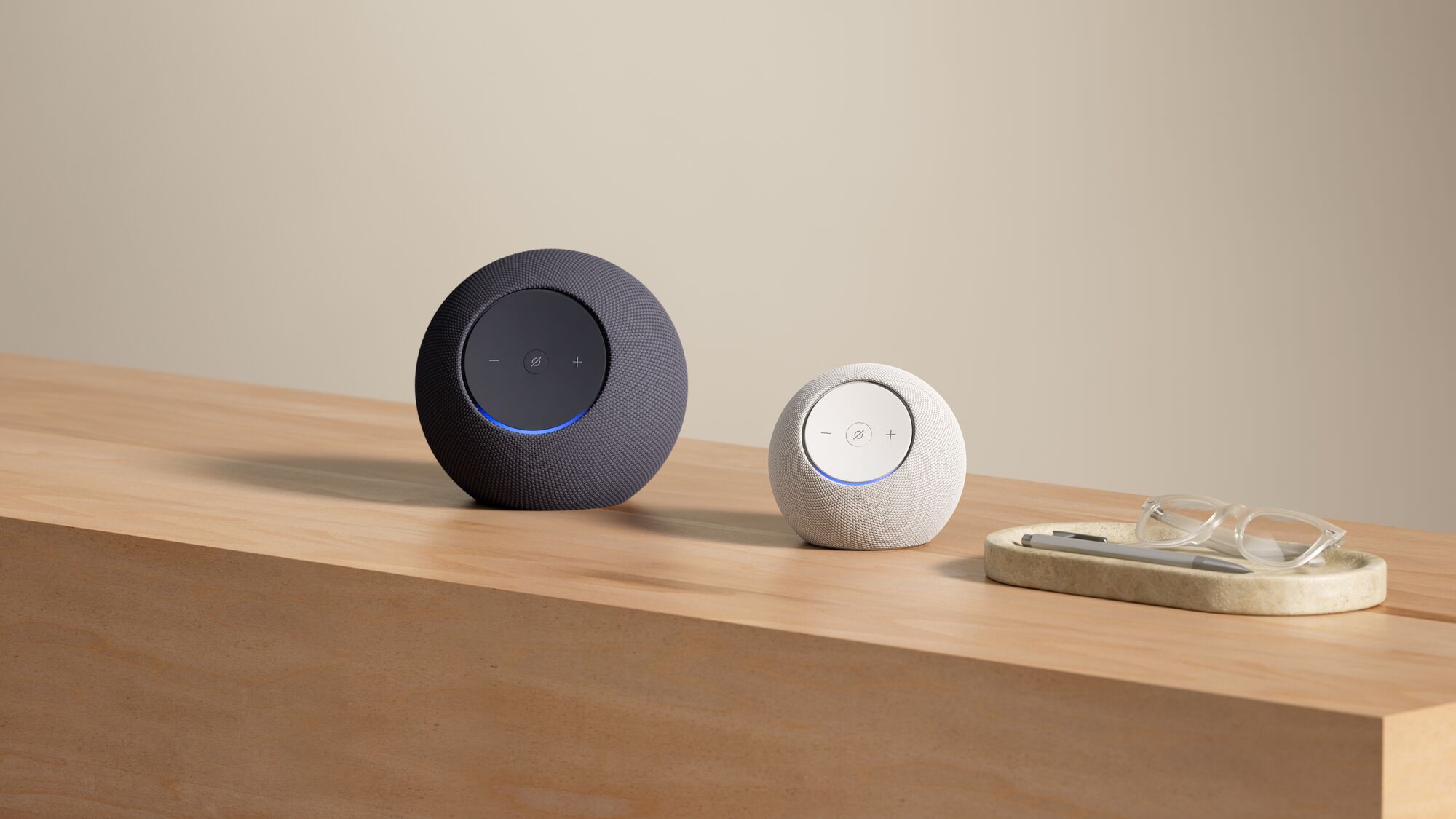
The audio team began its development journey by working with Amazon's industrial design team to settle on speaker shapes and sizes that would win over customers.
"We tried cylinders and boxes and spheres—all these basic shapes—and the sphere was the favorite," says Philip Hilmes, director of audio technology. "So then we asked, 'How big of a sphere should we do?' Nobody wants a watermelon-sized thing in their living room."
For the new Echo Studio, they settled on a diameter of just about 6 inches, the size of a large grapefruit—40% smaller than the original Studio.
 Conducting a near field acoustic scan on the new Echo Dot Max.
Conducting a near field acoustic scan on the new Echo Dot Max.This is where physics became a challenge, especially when it came to delivering the bass that customers expected. Bass output is a function of how much air the speaker can move, and a smaller package means less air to work with. Moreover, the woofers that push that air have to leave room for other components doing different jobs.
For the new Echo Studio, the team had to completely reimagine how to deliver the same powerful spatial audio experience in a much smaller package. "We custom designed the full range drivers and extended bandwidth to optimize for spatial audio in its form factor," Little explains. The team also optimized the precise locations and orientations of the three full-range drivers in the Echo Studio, to achieve the best possible spatial coverage.
The Echo Dot Max presented its own engineering challenges. Unlike some current and previous generation Echo Dot models with a single speaker, the team made a bold decision to introduce a two-way speaker system to this entry-level device for the first time.
The team also completely reimagined the internal architecture of the Echo Dot Max. Previous Echo Dot designs housed the speaker components in an internal module within the device's shell. With the Echo Dot Max, the team eliminated this inner module altogether through innovative engineering, instead sealing the speaker components directly to the device housing.
Though slightly more challenging to test, this design choice roughly doubled the available airspace behind the speaker. The additional space allowed the team to incorporate a larger driver with fewer space restrictions and optimize power efficiency, dramatically boosting the bass output.
Super bass

Over the course of more than 30 prototypes across both devices, the team worked through challenges around power management, thermal limits, and ventilation. They solved each not just by playing with different arrangements inside the spheres, but by custom designing most of the devices' components in-house.
"We shrunk the size of our components to fit within a smaller, more appealing industrial design, but pushed their physical limits to output more sound and maximize performance," Little says. Had they used off-the-shelf components, a much larger product footprint would have been needed, compromising what customers wanted—a beautiful design that sounds amazing.
And where they did hit physical limitations, custom software came to the rescue. With the woofers, for example, the hardware team didn't have to rely solely on hardware to limit distortion because they developed proprietary software algorithms to correct any imperfections in sound.
"No matter what you’re playing, we have an algorithm that maximizes the bass and delivers it as cleanly as possible while minimizing distortion," Little says.
Acoustic transparency
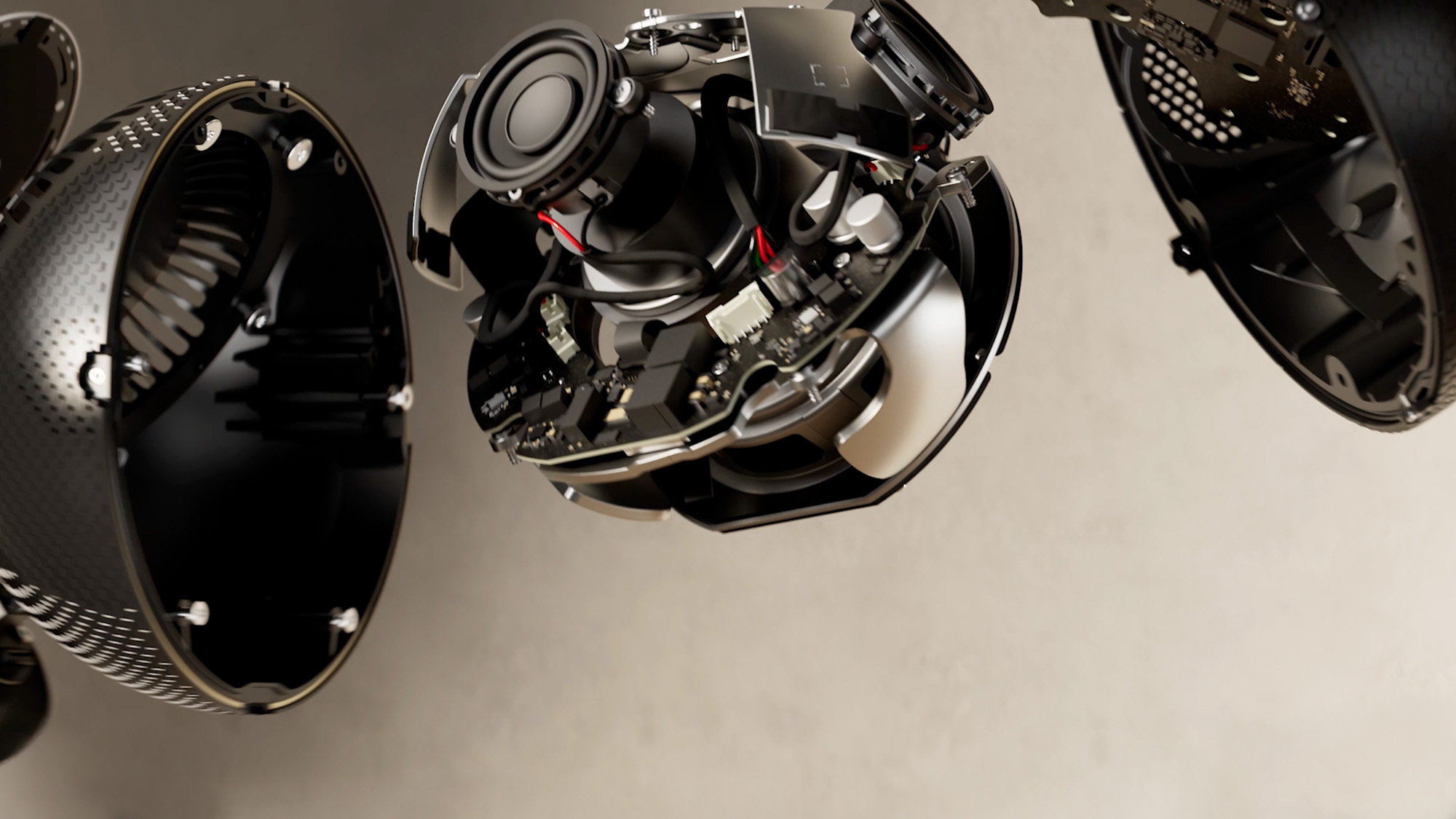
Another challenge came from the exteriors of both speakers, with a new design for the 3D knit fabric that surrounds the devices.
"Think about a sail," Little says. "If the wind is fluttering, you'll hear the sound of it flapping." Even though the speaker fabric is porous, the pressure of the air moving through it can create a similar effect.
The goal of fabric with "acoustic transparency" creates a delicate balancing act for engineers. If the fabric is too loose and starts to move in response to the air pushed by the speakers—particularly the powerful bass from the woofers—it creates its own unwanted sound. If the fabric is too dense, sound can't pass through effectively.
The solution required both sophisticated materials science, advanced acoustic modeling and measurement methods, and clever engineering. The team developed a hidden tensioning system housed within the power port that keeps the fabric perfectly taut. They also meticulously tuned the audio output to compensate for the frequencies most affected by the fabric covering.
Spatial awareness
Even the best-designed speaker can sound mediocre if it's placed in an acoustically challenging environment. A speaker that sounds perfect in a basement bedroom will perform quite differently in a spacious living room with vaulted ceilings.
Rather than leave this challenge for customers to solve with tedious manual calibration, the team designed the Echo Dot Max and Echo Studio to listen to what they’re playing, understand how the environment is changing what customers hear, and re-balance their sound accordingly.
 Near field acoustic scanner test rig and room.
Near field acoustic scanner test rig and room."You have to train algorithms to make that decision for you,” Hilmes says. “We gain insights from many real-world living rooms, including both simulated living rooms we have here in our audio labs, and a lot of computer-simulated rooms with different dimensions, materials, and furniture configurations.”
This room adaptation technology means customers don't need to be audio experts to get optimal sound. The speakers do the work, continuously monitoring and adjusting their output to match their environment.
Your new home theater
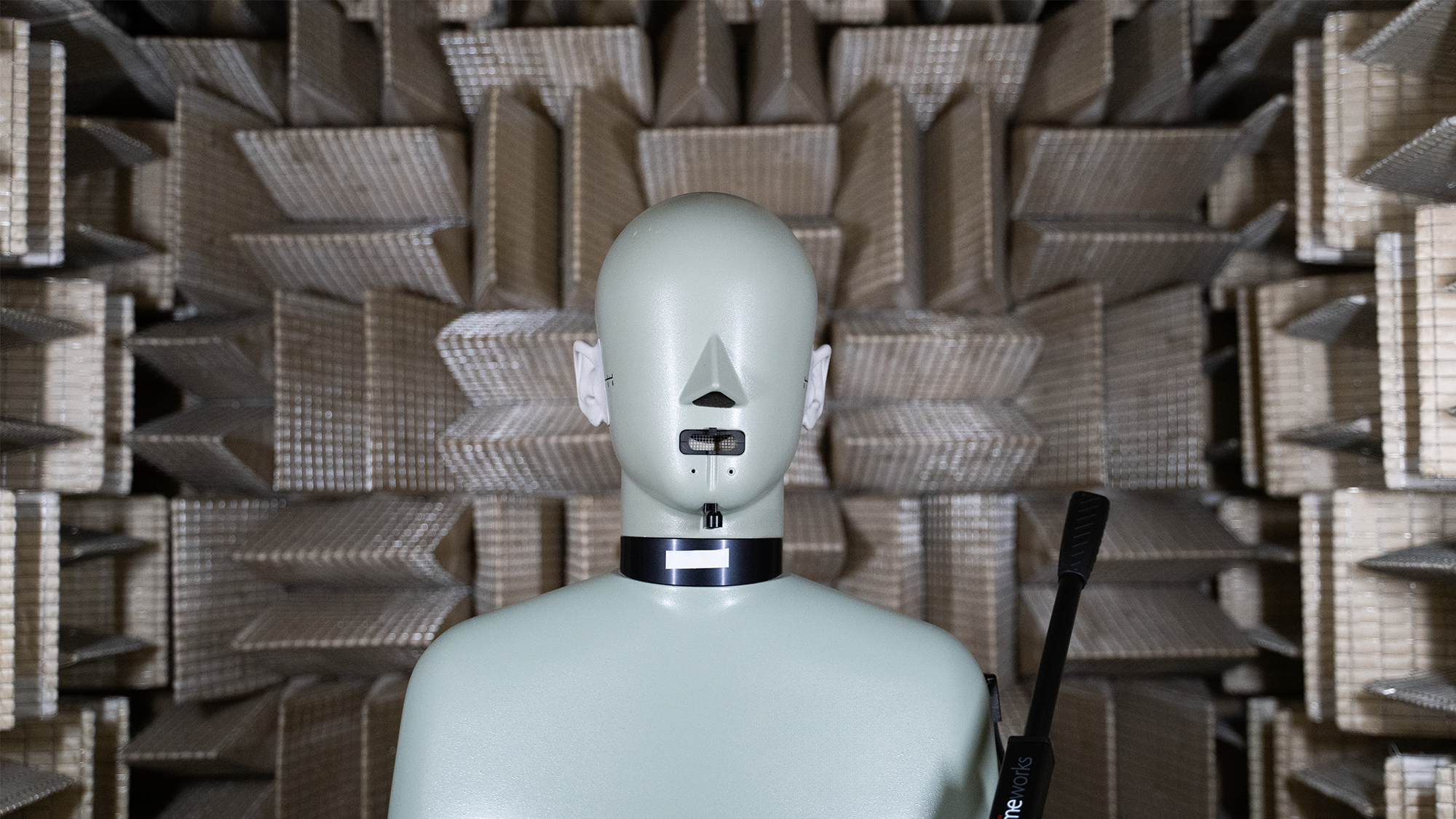 Head and torso set system, set in an anechoic chamber, for wearable product performance testing.
Head and torso set system, set in an anechoic chamber, for wearable product performance testing.All these audio innovations—now widely available—come together in the completely reimagined Alexa Home Theater system, which lets customers easily create high-quality surround sound in their homes. With the new Alexa Home Theater experience, Amazon expanded the configuration from supporting just a pair of Echo speakers and a sub, to now up to five of either Echo Dot Max or Echo Studio devices and a subwoofer that will enable surround sound customers can hear from every angle.
And thanks to that spatial awareness, customers don’t have to run extension cords around the room in search of the ideal setup spot. “You can just put your speakers anywhere they blend in best with your home,” Hilmes says. “We do the rest. That’s the power of Alexa Home Theater.”
The sound of success
The result of this development journey is a family of devices that embody Amazon's approach to innovation—start with what customers want, then find creative ways to deliver it even when the laws of physics seem to be working against you.
"We've really pushed the envelope in terms of trying to get more out of products that are really small," Little says. "I mean we literally pushed it to the point where we were going to be breaking physics."
It's an achievement that required rethinking not just how speakers are built, but how they interact with their environments and the people who use them—a harmony of industrial design, acoustic engineering, and artificial intelligence creating something that truly transforms how customers experience sound.
Next, learn more about how Amazon's next-generation Alexa Custom Assistant will power BMW's in-car voice assistant.
Trending news and stories
- AWS offers 9 game-based training experiences to power up your cloud skills
- Amazon is America’s low-price leader with prices on average 14% lower than 23 online U.S. retailers, says Profitero study
- The best books of 2025, according to the Amazon Editors
- 5 ways Amazon is making an impact on US communities
